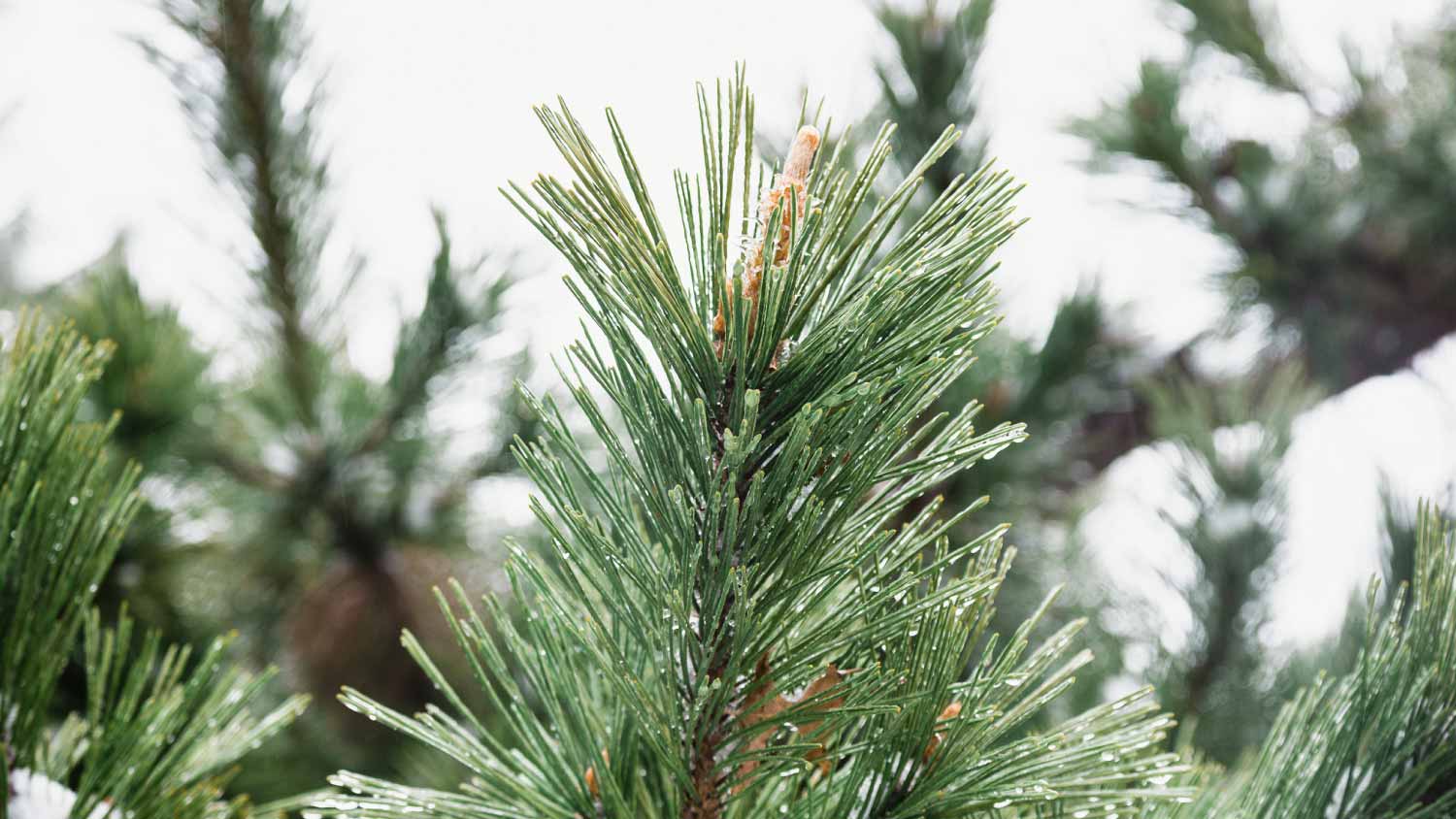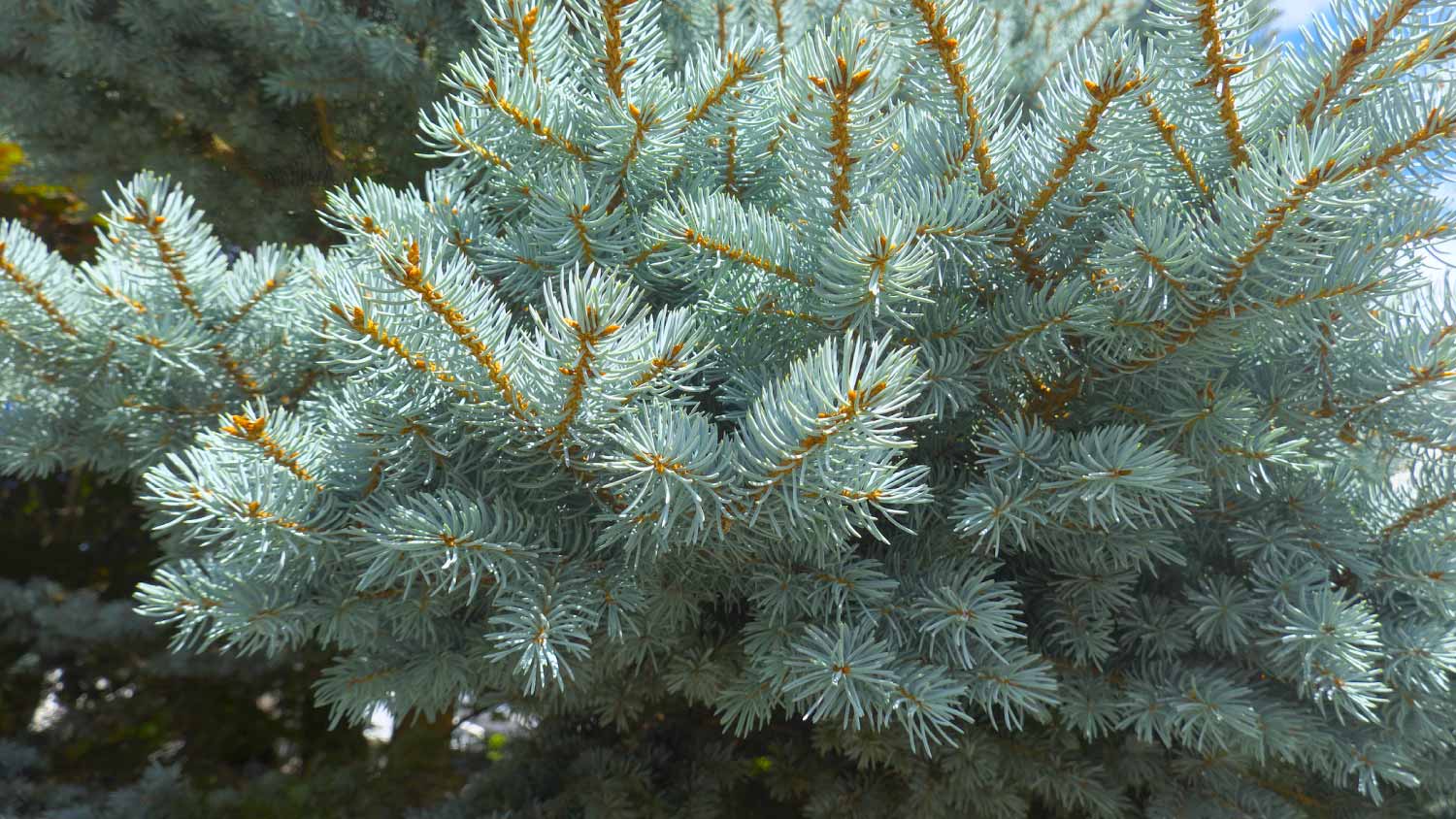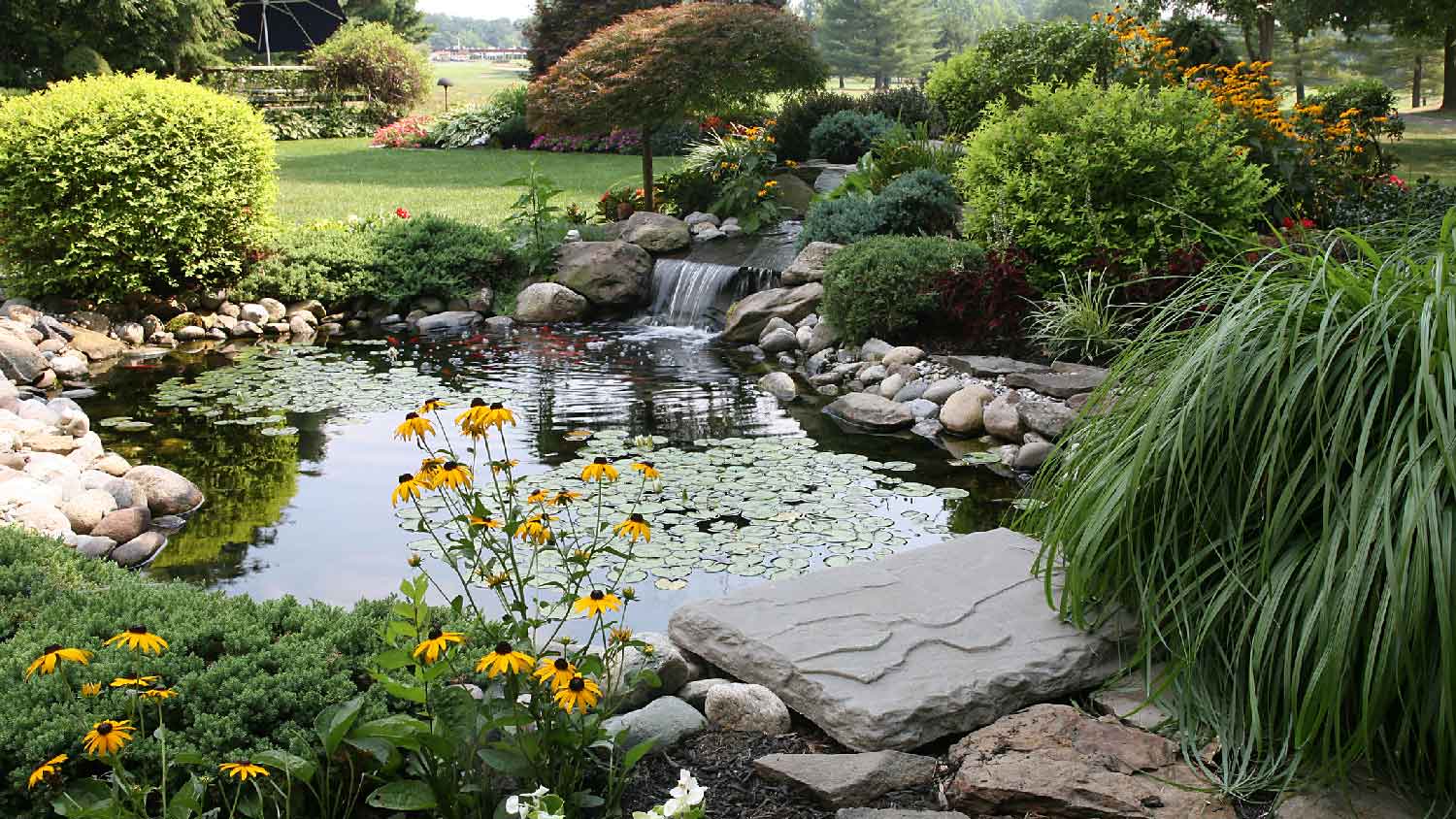
Landscape curbing can really improve the look of a yard, but at what cost? Find out how much it costs and the different ways you can do it
Pine trees never shed their needles and keep your property naturally green all year


Pine trees are an obvious choice for landscaping for countless homeowners across the country, and for good reason: they stay naturally green all year, they’re hardy and easy to care for, and they can thrive in just about any climate in the U.S. If you’re looking to bring some natural beauty and shade to your property, use this guide on the different types of pine trees for landscaping to choose the best variety for you.

The Eastern White Pine tree is one of the most prevalent species of pine tree in the country, despite mostly growing naturally in the eastern half of the U.S. This is a hardy species that can thrive in a variety of soil conditions and climates, making it an easy tree to care for.
It grows quickly, meaning it’s a good option if you want to shade a portion of your property within just a few years of planting. This tree sheds a lot of needles and cones, so be prepared for regular cleanups and a higher landscaping cost if you want a clean yard.
Average height: 50–80 feet
Trunk width: 1–2 feet
Canopy width: 40–60 feet
Care: Very easy
Debris level: High
Best for: Shade

Gone are the days when everyone on your block exclusively used boxwoods for landscaping! This tree species is a go-to option for those looking to step up their curb appeal. The dwarf variety is short and stout, with a dense canopy that lets you shape these trees to elevate their appearance. They won’t provide much shade, given their small size, but they’re ideal for use as landscaping decor.
This species can grow in just about any climate throughout the country, adding to its popularity. It does best in well-drained soil, though, and you may have issues with browning if you go too long without watering it in a dry spell. In dryer climates, planting some landscaping prairie grasses around the base can help keep the sun from drying out the dirt.
Average height: 6–9 feet
Trunk width: 4–8 inches
Canopy width: 4–6 feet
Care: Moderate
Best for: Decor

The Longleaf Pine is a particularly tall pine tree species, usually with a long, bare trunk and a short, relatively thin canopy. At 80 to 100 feet tall, though, it will still provide some shade if you plant them strategically. Most property owners plant multiple longleaf pines to provide adequate shade.
The big draw of this species is the minimal cleanup required, as the canopy is smaller than most other species. If you’re looking for shade without the constant needle and cone cleanups, this might be the species for you.
Average height: 80–100 feet
Trunk width: 1–3 feet
Canopy width: 30–40 feet
Care: Very easy
Best for: Shade with minimal cleanup

The Green Arrow pine tree is immediately recognizable with its super thin canopy that shoots up from the ground like an arrow and its distinctive weeping branches. These trees are beautiful and easy to care for, and they can handle most climates and soil conditions in the country.
The Green Arrow grows quickly, providing some height and beauty to your yard in just a few years. Plus, with its small canopy, it doesn’t require much cleanup.
Average height: 20–30 feet
Trunk width: 4–8 inches
Canopy width: 1–3 feet
Care: Very easy
Best for: Decor

The Western White Pine is a classic ornamental tree that can also provide great shade for your lawn, home, or garden beds. It grows about two feet per year, so it’s an excellent option if you want to add some height variance to your landscaping quickly.
When mature, the tree maintains a relatively thin canopy that drops needles and small cones, so regular cleanup will be necessary if you want to maintain a clean lawn. This is a hardy tree in most climates, although it may not fare well in the extreme cold.
Average height: 80–120 feet
Trunk width: 1–3 feet
Canopy width: 20–30 feet
Care: Very easy
Best for: Shade

The Pencil Point Juniper has a thick canopy that you can shape to add some elegance to your property. It grows super thin and only stands about five feet tall when fully mature, making it ideal for lining your property or bringing some refinement to a garden bed.
This tree can also thrive in most climates in the U.S., requires minimal care, and still looks quite elegant without pruning and shaping. This could be the ideal pine for your landscaping if you want a low-maintenance tree that makes a big impact.
Average height: 4–6 feet
Trunk width: 4–8 inches
Canopy width: 1–2 feet
Care: Very easy
Best for: Decor

The Swiss Mountain Pine remains relatively short at maturity but grows quite wide, making it a great option for privacy around your property line or close to your house. This tree does best in full sun conditions in cooler climates, but it can also handle warmer areas and some shade, making it adaptable to most areas in the country.
You can shape this tree to make it look a bit more refined, or you can let it grow naturally for maximum privacy. With a wide canopy, expect quite a lot of cleanup if you want the area around it to remain clean. The canopy grows close to the ground, though, so cleanup underneath isn’t usually necessary.
Average height: 20–30 feet
Trunk width: 5–20 inches
Canopy width: 15–20 feet
Care: Easy
Best for: Privacy

The Uncle Fogy Weeping Jack Pine is one of the most popular pine species for decor, and if you hire a landscaping designer, chances are they’ll mention this species. You can instantly recognize this tree because of its short stature and weeping trunk, which darts upward just a few feet and then droops back down to the ground. With a single trunk and thin canopy, it provides an air of tastefulness and sophistication to any garden bed.
If you want to maintain that elegance, though, you can expect to put in some work to shape it and make sure it retains its green canopy. It doesn’t do well in the shade, but it’s tolerant of a wide range of temperatures and soil conditions. With so much care required, it might be a good idea to hire a local landscaping company to provide the care and attention it needs.
Average height: 2–4 feet
Trunk width: 1–4 inches
Canopy width: 6–12 inches
Care: Challenging
Best for: Decor

As the name suggests, this pine variety takes on a blueish, deep greenish color that is very striking and serves as a way to set your landscaping apart from that of your neighbors. It’s a short tree that grows to between five and ten feet, making it ideal for smaller garden beds.
This tree does best in full sun conditions, but it can stand up to some shade, and it’s extremely hardy and easy to care for. If you’re looking for a tree for decorative purposes but don’t want to have to spend time pruning, shaping, watering, and caring for it, this is a great option. The color, not the shape, is what makes this tree a show-stopper.
Average height: 5–10 feet
Trunk width: 4–8 inches
Canopy width: 4–6 feet
Care: Very easy
Best for: Decor

The Dwarf Hinoki Cypress is native to Japan, but it’s a hardy species that will thrive in most areas throughout the U.S. It does best in full sun and moist soil, so it’s best to mulch around these trees, but again, it’s highly adaptable, making it an outstanding option to level up your landscaping.
This tree remains relatively short at around ten feet tall, with a thin canopy that sits close to the ground. The canopy is somewhat thick and can stand up to some shaping, although the natural shape of the tree is quite appealing. It grows slowly and provides a unique and intriguing appearance with its bushy needles.
Average height: 6–10 feet
Trunk width: 4–8 inches
Canopy width: 2–5 feet
Care: Moderate
Best for: Decor
From average costs to expert advice, get all the answers you need to get your job done.

Landscape curbing can really improve the look of a yard, but at what cost? Find out how much it costs and the different ways you can do it

How much does hardscaping cost project by project? Check out our breakdown for every price tag you need to know, from outdoor fireplaces to patios.

We break down the cost to remove bamboo, which is slightly higher than other forms of tree removal. It's a difficult DIY task because of bamboo's hardy underground roots.

Wondering what’s the difference between artificial grass vs. turf and which one’s right for you? Get the pros and cons of each one here.

How big is your pond? Knowing how much water your pond can hold will help you choose the right treatments for it and the proper number of aquatic life.

Regrading around your foundation can help prevent water damage to your home. Learn how to build up soil around the house foundation for better drainage.